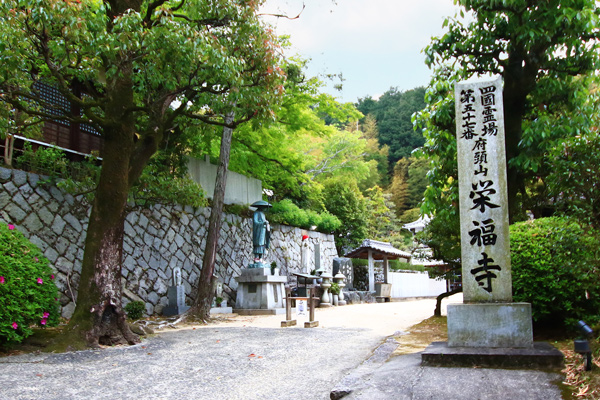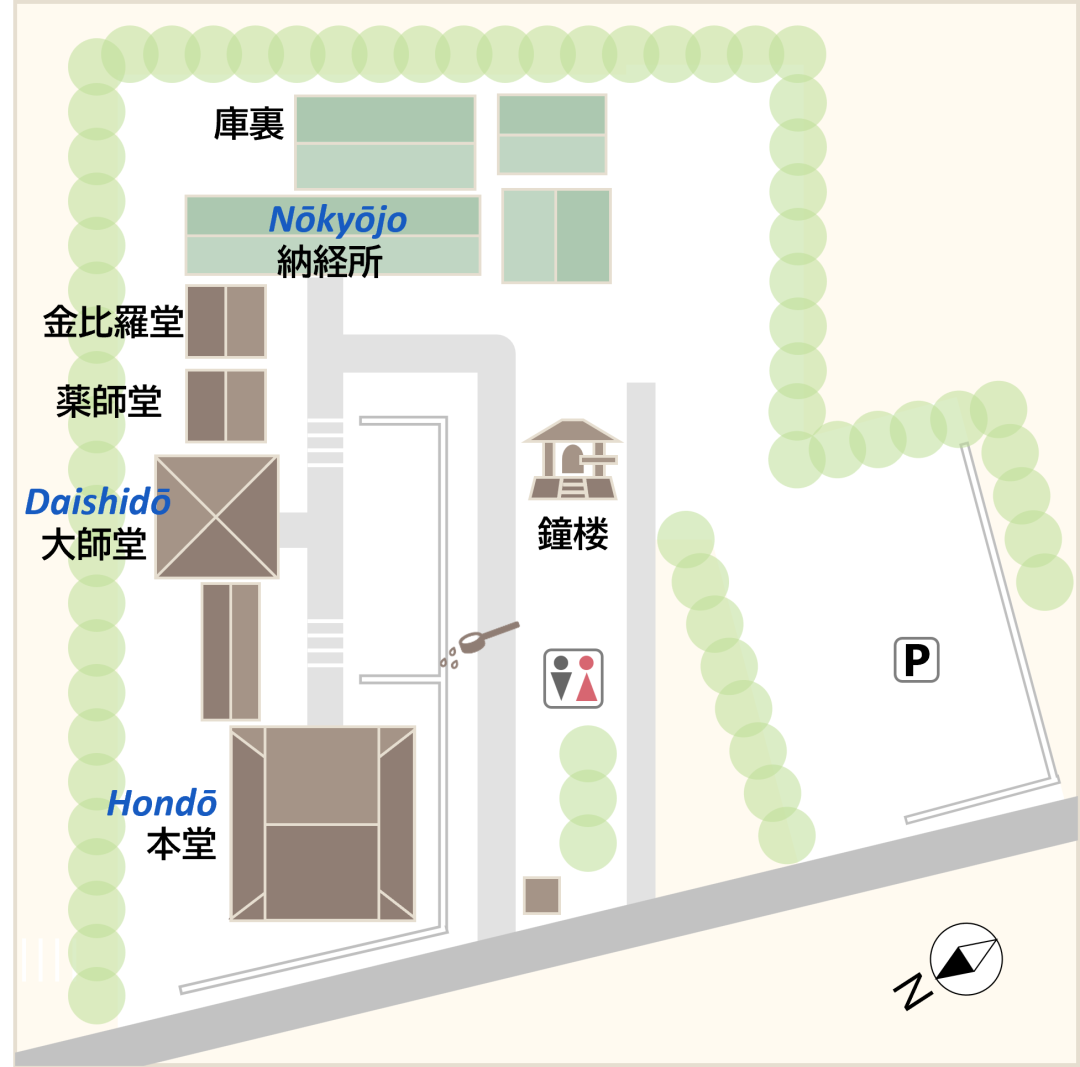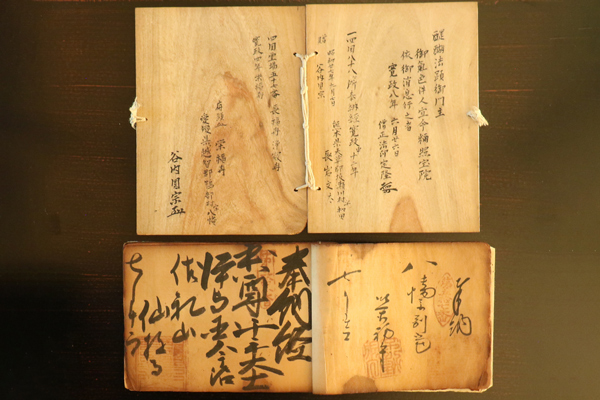The Shikoku Pilgrimage Temple Guide
Temple 57, Eifukuji

Precinct map

History of the temple
The Seto Inland Sea coastline has been the site of many maritime accidents. Eifukuji has been a place of worship since ancient times, to pray for safety on land and sea and for happiness and longevity, ever since Kobo Daishi conducted a ritual for sea gods.
Let's look at the legend of the temple. During the Konin era (814-824), Kobo Daishi made a pilgrimage to this area by order of Emperor Saga (reigned 809-823). He prayed for safety from wind and waves on the inland sea, and to avoid accidents at sea, and he performed a Goma fire ritual at the top of Mt. Futozan. On the final day of the ritual, the winds and waves subsided, and a statue of Amida Nyorai (Buddha of Limitless Light and Life) drifted across the sea. This statue was enshrined as the principal image in a hall built on the summit of Mt. Futozan. The temple became an imperial temple.
Eifukuji also has a history of the syncretism (blending) of Buddhism and Shintoism. In 859, Gyokyo Shonin of Daianji Temple in Yamato received a divine message from the Usa Hachiman shrine in Oita and decided to build a branch shrine of Usa Hachiman, named Otokoyama Hachiman or Iwashimizu Hachiman, in Yamashiro, Kyoto. While sailing the nearby seas for this purpose, he was washed ashore by a storm. He noticed that the shape of Mt. Futouzan was similar to that of Mt. Otokoyama in Yamashiro, and that the principal image of Amida Nyorai was also the principal Buddha of the Hachiman Daibosatsu. Gyokyo Shonin enshrined Hachiman Myojin in the shrine grounds and built a shrine pavilion, creating Katsuoka Hachimangu Shrine, which combined Shinto and Buddhist teachings. This Hachimangu Shrine is also called "Iwashimizu Hachimangu Shrine in Iyo.” A stone pagoda with the names of temples and shrines engraved on it stands as a guidepost, along with post, "Shikoku 57th Temple".
Due to the separation of Shintoism and Buddhism decreed by the Meiji government, the temple was moved to its current location halfway up the mountain, and the shrine and temple became independent of one another. The current Daishido is a relocated version of the hall that once stood at the top of the mountain. A handwritten sutra book from the mid-Edo period (1603-1868) in Eifukuji's collection bears the inscription "Betto Eifukuji," and a sutra book stamped with woodblocks from the Edo period also bears the name "Betto Eifukuji.” This indicates that the temple had been accepted as the place for pilgrims to receive stamps since ancient times, not only since the Meiji Restoration.
Highlights
Old Nokyocho (pilgrim’s stamp book)
This Nokyocho contains the name of a pilgrim who came from Kyushu in 1800. It seems that he made a round of the Shikoku Sacred Sites in about three months. This temple is described as "Hachimangu Shrine Betto Eifukuji Temple," which indicates that it was a Shinto/Buddhist syncretism.
Hakoguruma
This is a cart that a 15-year-old boy with a limp made a pilgrimage in. He had a dog which pulled the cart. He dedicated it along with his crutches after his leg was cured at this temple in 1933.
Onegai Jizo
At the entrance of the approach to the temple. This Earth Treasury Bodhisattva statue is wearing a red hat

Details
Names: Futōzan, Muryōjuin, Eifukuji
Denomination: Koyasan Shingon Sect
Principal Image: Amida Nyorai
Founder: Kobo Daishi
Founded: Konin era (810-824)
Access
Address: 200, Yawata-ko, Tamagawa-cho, Imabari City, Ehime 794-0114
Phone: 0898-55-2432
Parking: Available
Lodging: None
Official website: http://www.eifukuji.jp/
X: @eifukuji57/
